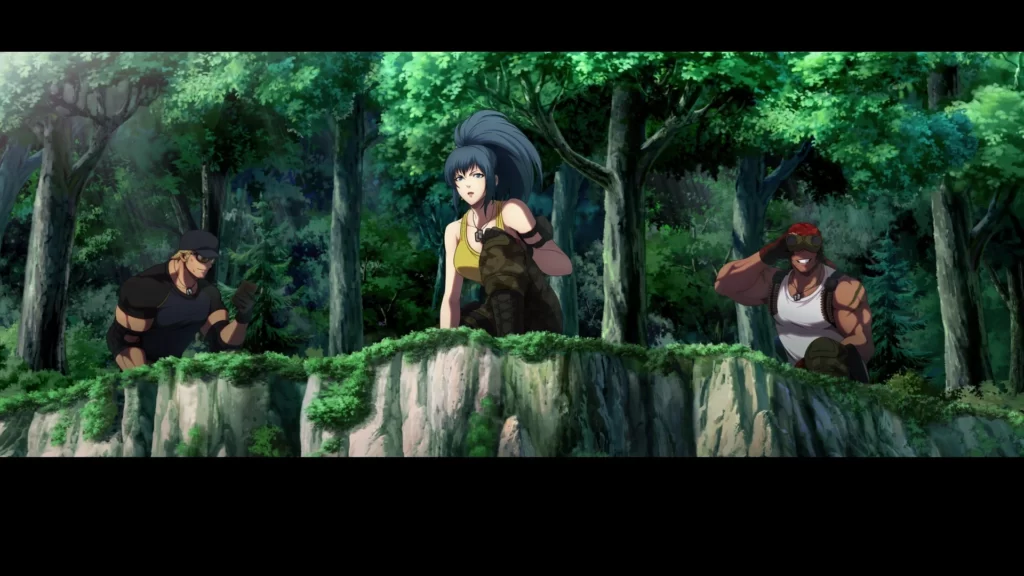As a proud Mexican gamer, I am pleased to share the extraordinary popularity of The King of Fighters (KoF) in our vibrant community. This iconic fighting game series has deeply rooted itself in Mexican culture, captivating people of all ages. In this article, you will discover the factors that have contributed to KoF’s immense success in Mexico, including its historical significance, vibrant competitive scene, cultural appeal, accessibility to arcades (maquinitas), neighborhood shops (tienditas), pharmacies, community support, and even the mischievous adventures of Mexican children who venture out to play.
Mexican The King of Fighters scene is also highly competitive. This pushes gamers to strive for improvement. The country has produced some of the world’s best The King of Fighters players, such as Violentkain, Wero Asamaya, and El Rosa, among others. These players have won numerous tournaments and have helped put Mexico on the map as a significant force in the fighting game community.

Historical Importance:
The King of Fighters is an incredible fighting video game series that began in 1994 with a very straightforward name: The King of Fighters ’94. Imagine a game where all your favorite characters from different fighting franchises developed by SNK come together to fight each other. It’s as if Smash Bros had arrived earlier!
You may also be interested in: Which power supply does my PC need?
The cool thing is that these games ran on a platform called Neo Geo, which was like an arcade console in the form of a cabinet. But instead of having to buy a new machine every time a new game came out, it was simply a matter of changing the cartridge. So, arcade owners could update the games without spending a fortune, and we, the gamers of yesteryear, only had to pay a few cents to enjoy them. With the frequency of new games in the series, with yearly releases, it kept the interest and excitement constant.
Now, here comes the interesting part: in Latin America, Neo Geo and The King of Fighters became super popular. Why? Well, it turns out that, during that time, arcades were more common than home game consoles. And although Nintendo and Sega were also present, the unaffordable prices of these consoles made it difficult for the average consumer to afford one. But Neo Geo made it more accessible, so it became the favorite choice.
Imagine this! In Mexico, in the 90s and early 2000s, almost every pharmacy and tienditas (neighborhood store) had a The King of Fighters arcade cabinet or maquinita! You could go buy medication or your favorite snacks and then have an exciting time playing with your friends.
But like in everything, there was also a slight problem. Piracy. Some people started making illegal copies of Neo Geo games and selling them at lower prices than the originals.

Vibrant Competitive Scene:
The King of Fighters revolutionized fighting games by introducing a unique format: three-person teams. This not only expanded the character roster but also allowed gamers to create strategies. The game was designed from the ground up to be competitive, with combo systems and fast-paced moves that encouraged agile and frantic gameplay.
In Mexico, this competitive approach strongly resonated among people. The term “la reta” became popular, referring to the challenge and willingness to face any other player to prove who was the best. Las maquinitas became meeting places where friends gathered to engage in thrilling battles and establish friendly rivalries.
“La reta” has been a tradition that involves placing a coin on any arcade machine, indicating that you will be the next challenger in any fighting game. It was an exciting way to establish a friendly rivalry and demonstrate your determination to surpass the best player. This practice strengthened the gaming community and generated a sense of camaraderie around the game.
Thus, The King of Fighters became much more than just a fighting game. It was a shared passion that transcended the screens and became a symbol of competitiveness in Mexican arcades. La reta represented the challenging spirit of players, willing to measure themselves against the best and demonstrate their skills in the world of The King of Fighters.
Mexico boasts a passionate and highly competitive fighting game community, with The King of Fighters being one of the undisputed leaders. The fast-paced action, intricate mechanics, and complex combo systems of the game have captivated Mexican gamers who appreciate the strategic depth of fighting games. Throughout Mexico, KoF tournaments and events are regular occurrences that bring together competitive gamers from across the country to showcase their talents, test their skills, and forge lasting rivalries and friendships.
Cultural Attraction:
In addition to its addictive gameplay, The King of Fighters won the hearts of fans by including Mexican characters. Imagine the excitement of discovering Ramon, a brave one-eyed wrestler, or Angel, an agile and powerful fighter! Alongside Tizoc, an imposing professional wrestler, they became icons within the game. Their artistic design, inspired by anime and manga, has captivated Mexican fans, who find familiarity and connection with these popular forms of expression in our region.
The inclusion of these Mexican characters in The King of Fighters was not only a strategic success on SNK’s part, but it also created a special connection with Latin American gamers. Seeing fighters that resembled us, with their distinctive features and personalities, sparked a sense of identification and pride within our gaming community.
They not only provided us with an opportunity to enjoy the action and competition in the game, but they also made us feel valued and recognized as an integral part of the gaming community. Their authenticity and representation have left a lasting impact on our culture and strengthened the bond between the game and our cultural identity as Mexicans. It has also allowed us to celebrate our heritage and be proud of who we are.

Accessibility of Arcades:
Another key aspect was the accessibility of the game, both in las maquinitas and in tienditas, and even pharmacies. Las maquinitas became social gathering places where friends would come together to challenge each other and determine who was the best. Additionally, having The King of Fighters arcade cabinets in nearby tienditas allowed gamers to enjoy the game in their own neighborhoods, further fueling its popularity.
The combination of las maquinitas and tienditas allowed The King of Fighters to deeply root itself in Mexican gaming culture since the 90s and 2000s. These spaces not only offered the opportunity to enjoy the game but also became venues for socializing and friendly competition. Gamers would gather, exchange tips and tricks, and share their passion for the game.
Another reason for the popularity of The King of Fighters in Mexico is its strong community presence. There are several active communities of The King of Fighters in Mexico, where gamers can come together to play, learn new techniques, and compete in tournaments. These communities provide a supportive environment for gamers to improve their skills and have fun.

The Mischief:
During the golden age of las maquinitas, Mexican children and young people used to get into mischief when their mothers sent them on errands with some change. Although sometimes, our mischief would earn us a scolding from our mothers when we stayed out longer than we should have. Instead of completing the errand, we would quickly head to the neighborhood tiendita and eagerly await our turn to challenge others at the maquinita. Absorbed in the exciting battles, we would play with the change until it ran out, often getting scolded later for our innocent mischief. These memories only heightened the excitement and legend of KoF among Mexican gamers.
Many times, after school, many Mexicans would head to las maquinitas with their friends. It was an exciting and fun escape after a school day. However, there were also occasions when some Mexicans would decide to “irse de pinta” from school, that is, not attend without permission. It was a risky move, but the temptation to hang out at the arcade and play the popular games, such as The King of Fighters, was too strong. Sometimes, the thrill and adrenaline of challenging other gamers led us to make impulsive decisions.
Conclusion:
As a Mexican gamer, I am proud to witness the exceptional popularity of The King of Fighters in our country. Its historical significance, vibrant competitive scene, cultural appeal, accessibility in local arcades and shops, community support, and even the antics of children coming out to play have contributed to its enduring success. The King of Fighters has become more than just a game; it is a cultural phenomenon that unites Mexican gamers, fosters national pride, and continues to captivate players of all ages.
While it is true that the maquinitas are less common nowadays, there are still some places where you can play them in Mexico. Whether in specialized gaming halls, themed bars, or gaming events, you can find arcade machines with The King of Fighters and other classics. Take the opportunity to relive the excitement of those nostalgic games and share moments with other gamers who share your passion for video games. Although arcades may no longer be as common, the spirit of fun and competition lives on among video game enthusiasts.













